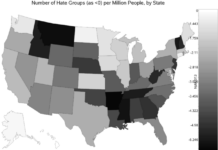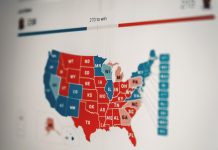There are plenty of reasons to think that on November 8 our votes won’t be counted accurately. And in many places, hacking the vote could be accomplished without leaving any evidence behind. The reason: No paper trail is created. The only evidence of your vote is the electronic count in the box. And that record can be hacked.
How to Hack the Vote
A CBS News story shows how some voting machines can be hacked with a $15 purchase at an office supply store. And the Brennan Center for Justice published a study last year that explains several reasons why it’s so easy to hack them. First, they’re old. Some are more than 15 years old. Forty-three states have some machines that will be more than ten years old on Election Day 2016. In most of these states, the Brennan Center says, the majority of voting machines will be more than ten years old. In 14 states, some machines will be at least 15 years old.
Some of these machines aren’t manufactured any more. Election officials can’t get parts easily if a machine breaks down. And the software doesn’t have modern security features, so it’s easy to manipulate. So the machines are vulnerable to hacking as well as breakdown.
Another LA story from a few years ago describes problems with South Carolina’s machines that led to Alvin Greene, an unknown, unemployed veteran with a less than honorable discharge and pending criminal charges, getting 60 percent of the vote in the Democratic primary race for U.S. Senator.
Paper Is Important
The machines in South Carolina, the ES&S touch screen machines, did not create any paper trail. There was no way to audit the vote. Twenty percent of jurisdictions use these machines or others that leave no paper trail. Sixty percent of jurisdictions don’t audit their election results routinely, whether or not they have a paper trail.
The Brennan Center report focuses on errors. Although it mentions that machines can be manipulated, it concentrates on replacing outdated machines and how to make that happen. But there also is evidence that the makers of voting machines may have allowed or caused their machines to malfunction to create a particular result. Specifically, Diebold, Inc., was connected to malfunctions that affected election results in swing states in two presidential elections—Florida in 2000 and Ohio in 2004.
Image is a YouTube screengrab.





